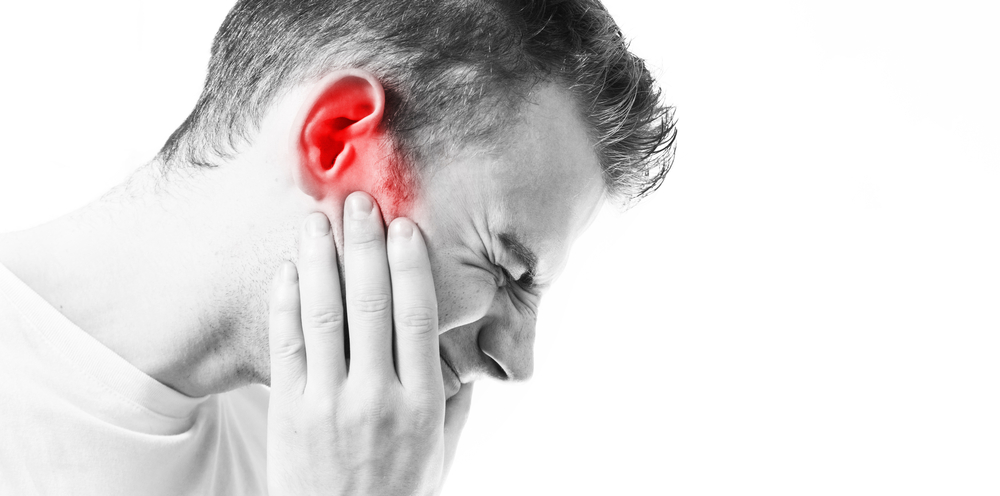Sinus Surgery
What is Eustachian Tube Dysfunction?
February 10, 2021
•
4 minutes
Reviewed by Michael Kaplan, MD

Though a lot of patients ask, “What is Eustachian tube dysfunction?” it’s a more common sinus issue than people realize. The small tube that connects your throat to your middle ear inside of your eardrum is called your Eustachian tube. This tube is responsible for keeping air pressure and fluids from building up in your ear.
A buildup of mucus and/or inflammation in your ears — typically caused by a cold, the flu, allergies, or sinus infections — can block the tube. Fluid in the ears can also cause a middle ear infection (otitis media). Once the tube is blocked, air cannot get into the middle ear space from the ear canals, causing a difference in air pressure around the eardrum. This is what causes Eustachian tube dysfunction (ETD) and its symptoms. (For more information on sinusitis and ear infections, check out our article on How Sinus Infections an Ear Infections Can Be Connected.)
What are the symptoms of a blocked Eustachian tube?
The most frequent follow-up question we receive to the query, “What is Eustachian tube dysfunction?” typically relate to the types of symptoms associated with the condition.
Common symptoms of a blocked Eustachian tube include:
- Muffled sounds or partial hearing loss
- Ear pain
- A feeling of fullness in the ears
- Dizziness
- Ringing or popping noises in the ear (tinnitus)
The duration of the Eustachian tube dysfunction depends on the underlying cause of the condition. If you are experiencing Eustachian tube dysfunction symptoms for over two weeks, see a doctor as soon as possible.
What is the treatment for Eustachian tube dysfunction?
Blocked Eustachian tubes typically get better on their own, but when they don’t (or when you have recurring Eustachian tube issues) you may want to seek treatment. Fortunately, if you’re wondering how to fix Eustachian tube dysfunction there are many remedies available to help relieve patients from ETD.
For less serious cases, patients may have success with home remedies and medication. For chronic and/or serious cases of Eustachian tube dysfunction, however, patients may want to seek medical intervention. Medical procedures include myringotomy, pressure equalization tubes, and Eustachian tube balloon dilation. The last of these — Eustachian tube balloon dilation — is the least invasive procedure and is quickly growing in popularity amongst patients and doctors alike. We discuss it in-depth below. For more information regarding home remedies, OTC medications, and the other medical options, please see our article on Eustachian Tube Dysfunction Treatments.
How does Eustachian tube balloon dilation work?
Dr. Michael Kaplan positions and inflates a balloon within the clogged Eustachian tube pathway. The inflation of the balloon opens up the tunnel that connects the middle ear with the back of the nose. The inflated balloon allows pressure to release and drainage to clear and eliminate your pain. This procedure has proved the most successful at providing long-term relief from chronic and recurring Eustachian tube dysfunction with a success rate of 90%!
If you’re interested in this procedure and would like to learn more, read our article about the benefits of Eustachian tube balloon dilation.
Find Eustachian tube dysfunction relief at Kaplan Sinus Relief
Have more questions like, “What is Eustachian tube dysfunction?” Curious about what treatment option for Eustachian tube dysfunction best suits your needs? Kaplan Sinus Relief is here to help.
For long-lasting relief from Eustachian tube dysfunction, more and more patients are turning to
Eustachian tube balloon dilation in Houston. Dr. Michael Kaplan and his team at Kaplan Sinus Relief have provided lasting relief to patients who suffer with ETD and other underlying sinus issues for an improved quality of life.
Call Kaplan Sinus Relief today at 713-766-1818 or request an appointment online today.
More Helpful Articles by Kaplan Sinus Relief:
